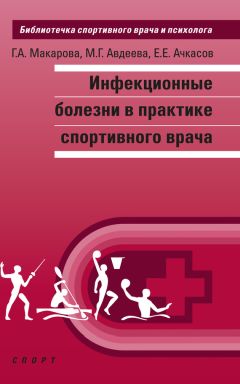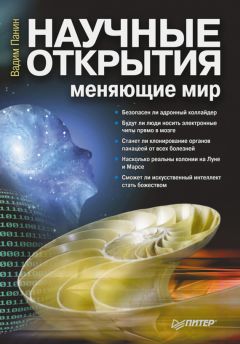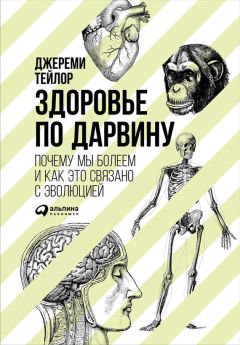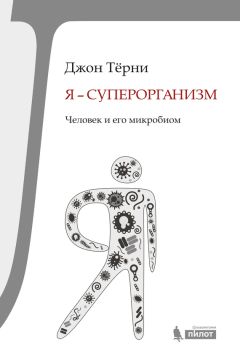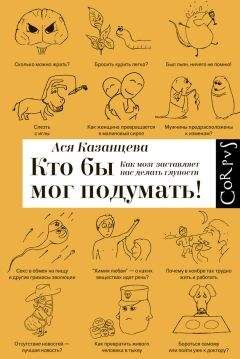Чарлз Дахигг - Власть привычки. Почему мы живем и работаем именно так, а не иначе
Все авторские права соблюдены. Напишите нам, если Вы не согласны.
Описание книги "Власть привычки. Почему мы живем и работаем именно так, а не иначе"
Описание и краткое содержание "Власть привычки. Почему мы живем и работаем именно так, а не иначе" читать бесплатно онлайн.
Лауреат Пулитцеровской премии Чарлз Дахигг открывает перед читателями увлекательный мир последних научных открытий, которые объясняют, как формируются и почему существуют привычки, а также то, как их можно изменить.
Как «Starbucks» завоевывает своих клиентов?
Возможно ли запрограммировать себя на победу?
Влияют ли привычки одного человека на достижение общей цели?
Умело подкрепляя научную информацию интереснейшими примерами – историями из жизни крупных корпораций, успешных спортивных команд и даже движения за гражданские права, – Дахигг подводит нас к совершенно новому пониманию человеческой натуры и ее поистине неограниченного потенциала.
От силы привычки зависит все: занятия спортом и борьба с лишним весом, профессиональная эффективность и финансовый успех. Изменяя привычки, мы способны изменить и свою жизнь, и мир вокруг нас!
16
B. Bendriem et al., “Quantitation of the Human Basal Ganglia with Positron Emission Tomography: A Phantom Study of the Effect of Contrast and Axial Positioning”, IEEE Transactions on Medical Imaging 10, № 2 (1991): 216–22.
17
G. E. Alexander & M. D. Crutcher, “Functional Architecture of Basal Ganglia Circuits: Neural Substrates of Parallel Processing”, Trends in Neurosciences 13 (1990): 266–71; André Parent & Lili-Naz Hazrati, “Functional Anatomy of the Basal Ganglia”, Brain Research Reviews 20 (1995): 91–127; Roger L. Albin, Anne B. Young & John B. Penney, “The Functional Anatomy of Basal Ganglia Disorders”, Trends in Neurosciences 12 (1989): 366–75.
18
Alain Dagher & T. W. Robbins, “Personality, Addiction, Dopamine: Insights from Parkinson’s Disease”, Neuron 61 (2009): 502–10.
19
Разобраться в экспериментах, которые проводят в лабораториях Массачусетского технологического института, а также в строении и функциях базальных ганглий, включая их роль в привычках и памяти, мне помогли следующие материалы: F. Gregory Ashby & John M. Ennis, “The Role of the Basal Ganglia in Category Learning”, Psychology of Learning and Motivation 46 (2006): 1–36; F. G. Ashby, B. O. Turner & J. C. Horvitz, “Cortical and Basal Ganglia Contributions to Habit Learning and Automaticity”, Trends in Cognitive Sciences 14 (2010): 208–15; C. Da Cunha & M. G. Packard, “Preface: Special Issue on the Role of the Basal Ganglia in Learning and Memory”, Behavioural Brain Research 199 (2009): 1–2; C. Da Cunha et al., “Learning Processing in the Basal Ganglia: A Mosaic of Broken Mirrors”, Behavioural Brain Research 199 (2009): 157–70; M. Desmurget & R. S. Turner, “Motor Sequences and the Basal Ganglia: Kinematics, Not Habits”, Journal of Neuroscience 30 (2010): 7685–90; J. J. Ebbers & N. M. Wijnberg, “Organizational Memory: From Expectations Memory to Procedural Memory”, British Journal of Management 20 (2009): 478–90; J. A. Grahn, J. A. Parkinson & A. M. Owen, “The Role of the Basal Ganglia in Learning and Memory: Neuropsychological Studies”, Behavioural Brain Research 199 (2009): 53–60; Ann M. Graybiel, “The Basal Ganglia: Learning New Tricks and Loving It”, Current Opinion in Neurobiology 15 (2005): 638–44; Ann M. Graybiel, “The Basal Ganglia and Chunking of Action Repertoires”, Neurobiology of Learning and Memory 70, № 1–2 (1998): 119–36; F. Gregory Ashby & V. Valentin, “Multiple Systems of Perceptual Category Learning: Theory and Cognitive Tests”, Handbook of Categorization in Cognitive Science, ed. Henri Cohen & Claire Lefebvre (Oxford: Elsevier Science, 2005); S. N. Haber & M. Johnson Gdowski, “The Basal Ganglia”, The Human Nervous System, 2nd ed., ed. George Paxinos & Jürgen K. Mai (San Diego: Academic Press, 2004), 676–738; T. D. Barnes et al., “Activity of Striatal Neurons Reflects Dynamic Encoding and Recoding of Procedural Memories”, Nature 437 (2005): 1158–61; M. Laubach, “Who’s on First? What’s on Second? The Time Course of Learning in Corticostriatal Systems”, Trends in Neurosciences 28 (2005): 509–11; E. K. Miller & T. J. Buschman, “Bootstrapping Your Brain: How Interactions Between the Frontal Cortex and Basal Ganglia May Produce Organized Actions and Lofty Thoughts”, Neurobiology of Learning and Memory, 2nd ed., ed. Raymond P. Kesner & Joe L. Martinez (Burlington, Vt.: Academic Press, 2007), 339–54; M. G. Packard, “Role of Basal Ganglia in Habit Learning and Memory: Rats, Monkeys and Humans”, Handbook of Behavioral Neuroscience, ed. Heinz Steiner & Kuei Y. Tseng, 561–69; D. P. Salmon & N. Butters, “Neurobiology of Skill and Habit Learning”, Current Opinion in Neurobiology 5 (1995): 184–90; D. Shohamy et al., “Role of the Basal Ganglia in Category Learning: How Do Patients with Parkinson’s Disease Learn?” Behavioral Neuroscience 118 (2004): 676–86; M. T. Ullman, “Is Broca’s Area Part of a Basal Ganglia Thalamocortical Circuit?” Cortex 42 (2006): 480–85; N. M. White, “Mnemonic Functions of the Basal Ganglia”, Current Opinion in Neurobiology 7 (1997): 164–69.
20
Ann M. Graybiel, “Overview at Habits, Rituals, and the Evaluative Brain”, Annual Review of Neuroscience 31 (2008): 359–87; T. D. Barnes et al., “Activity of Striatal Neurons Reflects Dynamic Encoding and Recoding of Procedural Memories”, Nature 437 (2005): 1158–61; Ann M. Graybiel, “Network-Level Neuroplasticity in Cortico-Basal Ganglia Pathways”, Parkinsonism and Related Disorders 10 (2004): 293–96; N. Fujii & Ann M. Graybiel, “Time-Varying Covariance of Neural Activities Recorded in Striatum and Frontal Cortex as Monkeys Perform Sequential-Saccade Tasks”, Proceedings of the National Academy of Sciences 102 (2005): 9032–37.
21
Графики, представленные в этой главе, упрощены. Полное описание результатов исследований можно найти в работах и лекциях доктора Энн Грэйбил.
22
Ann M. Graybiel, “The Basal Ganglia and Chunking of Action Repertoires”, Neurobiology of Learning and Memory 70 (1998): 119–36.
23
Более подробно см.: A. David Smith & J. Paul Bolam, “The Neural Network of the Basal Ganglia as Revealed by the Study of Synaptic Connections of Identified Neurones”, Trends in Neurosciences 13 (1990): 259–65; John G. McHaffle et al., “Subcortical Loops Through the Basal Ganglia”, Trends in Neurosciences 28 (2005): 401–7; Ann M. Graybiel, “Neurotransmitters and Neuromodulators in the Basal Ganglia”, Trends in Neurosciences 13 (1990): 244–54; J. Yelnik, “Functional Anatomy of the Basal Ganglia”, Movement Disorders 17 (2002): 15–21.
24
Более подробно см.: Catherine A. Thorn et al., “Differential Dynamics of Activity Changes in Dorsolateral and Dorsomedial Striatal Loops During Learning”, Neuron 66 (2010): 781–95; Ann M. Graybiel, “The Basal Ganglia: Learning New Tricks and Loving It”, Current Opinion in Neurobiology 15 (2005): 638–44.
25
Более подробно см.: Peter J. Bayley, Jennifer C. Frascino, & Larry R. Squire, “Robust Habit Learning in the Absence of Awareness and Independent of the Medial Temporal Lobe”, Nature 436 (2005): 550–53; M. Reed et al., “Learning About Categories That Are Defined by Object-Like Stimuli Despite Impaired Declarative Memory”, Behavioral Neuroscience 133 (1999): 411–19; B. J. Knowlton, J. A. Mangels, & L. R. Squire, “A Neostriatal Habit Learning System in Humans”, Science 273 (1996): 1399–1402.
26
Необходимо отметить, что работа Сквайра с Паули не ограничивалась исключительно привычками. Благодаря Юджину удалось сделать ряд важных открытий в таких областях, как пространственная память и прайминг. Более подробные сведения об этих и других находках представлены на персональной веб-странице Сквайра: http://psychiatry.ucsd.edu/faculty/lsquire.html.
27
Более подробно см.: Monica R. F. Hilario et al., “Endocannabinoid Signaling Is Critical for Habit Formation”, Frontiers in Integrative Neuroscience 1 (2007): 6; Monica R. F. Hilario & Rui M. Costa, “High on Habits”, Frontiers in Neuroscience 2 (2008): 208–17; A. Dickinson, “Appetitive-Aversive Interactions: Superconditioning of Fear by an Appetitive CS”, Quarterly Journal of Experimental Psychology 29 (1977): 71–83; J. Lamarre & P. C. Holland, “Transfer of Inhibition After Serial Feature Negative Discrimination Training”, Learning and Motivation 18 (1987): 319–42; P. C. Holland, “Differential Effects of Reinforcement of an Inhibitory Feature After Serial and Simultaneous Feature Negative Discrimination Training”, Journal of Experimental Psychology: Animal Behavior Processes 10 (1984): 461–75.
28
Jennifer L. Harris, Marlene B. Schwartz, & Kelly D. Brownell, “Evaluating Fast Food Nutrition and Marketing to Youth”, Yale Rudd Center for Food Policy and Obesity, 2010; H. Qin & V. R. Prybutok, “Determinants of Customer-Perceived Service Quality in Fast-Food Restaurants and Their Relationship to Customer Satisfaction and Behavioral Intentions”, The Quality Management Journal 15 (2008): 35; H. Qin & V. R. Prybutok, “Service Quality, Customer Satisfaction, and Behavioral Intentions in Fast-Food Restaurants”, International Journal of Quality and Service Sciences 1 (2009): 78. Более подробную информацию по данной теме можно найти в следующих источниках: C. Berridge, “Brain Reward Systems for Food Incentives and Hedonics in Normal Appetite and Eating Disorders”, Appetite and Body Weight, ed. Tim C. Kirkham & Steven J. Cooper (Burlington, Vt.: Academic Press, 2007), 91–215; K. C. Berridge et al., “The Tempted Brain Eats: Pleasure and Desire Circuits in Obesity and Eating Disorders”, Brain Research 1350 (2010): 43–64; J. M. Dave et al., “Relationship of Attitudes Toward Fast Food and Frequency of Fast-Food Intake in Adults”, Obesity 17 (2009): 1164–70; S. A. French et al., “Fast Food Restaurant Use Among Adolescents: Associations with Nutrient Intake, Food Choices and Behavioral and Psychosocial Variables”, International Journal of Obesity and Related Metabolic Disorders 25 (2001): 1823; N. Ressler, “Rewards and Punishments, Goal-Directed Behavior and Consciousness”, Neuroscience and Biobehavioral Reviews 28 (2004): 27–39; T. J. Richards, “Fast Food, Addiction, and Market Power”, Journal of Agricultural and Resource Economics 32 (2007): 425–47; M. M. Torregrossa, J. J. Quinn, & J. R. Taylor, “Impulsivity, Compulsivity, and Habit: The Role of Orbitofrontal Cortex Revisited”, Biological Psychiatry 63 (2008): 253–55; L. R. Vartanian, C. P. Herman, & B. Wansink, “Are We Aware of the External Factors That Influence Our Food Intake?” Health Psychology 27 (2008): 533–38; T. Yamamoto & T. Shimura, “Roles of Taste in Feeding and Reward”, The Senses: A Comprehensive Reference, ed. Allan I. Basbaum et al. (New York: Academic Press, 2008), 437–58; F. G. Ashby, B. O. Turner, & J. C. Horvitz, “Cortical and Basal Ganglia Contributions to Habit Learning and Automaticity”, Trends in Cognitive Sciences 14 (2010): 208–15.
29
K. C. Berridge & T. E. Robinson, “Parsing Reward”, Trends in Neurosciences 26 (2003): 507–13; Kelly D. Brownell & Katherine Battle Horgen, Food Fight: The Inside Story of the Food Industry, America’s Obesity Crisis, and What We Can Do About It (Chicago: Contemporary Books, 2004); Karl Weber, ed., Food, Inc.: How Industrial Food Is Making Us Sicker, Fatter, and Poorer and What You Can Do About It (New York: Public Affairs, 2004); Ronald D. Michman & Edward M. Mazze, The Food Industry Wars: Marketing Triumphs and Blunders (Westport, Conn.: Quorum Books, 1998); M. Nestle, Food Politics: How the Food Industry Influences Nutrition and Health (Berkeley: University of California Press, 2002); D. R. Reed & A. Knaapila, “Genetics of Taste and Smell: Poisons and Pleasures”, Progress in Molecular Biology and Translational Science, ed. Claude Bouchard (New York: Academic Press); N. Ressler, “Rewards and Punishments, Goal-Directed Behavior and Consciousness”, Neuroscience and Biobehavioral Reviews 28 (2004): 27–39; T. Yamamoto & T. Shimura, “Roles of Taste in Feeding and Reward”, The Senses: A Comprehensive Reference, ed. Allan I. Basbaum et al. (New York: Academic Press, 2008), 437–58.
30
Историей о Хопкинсе, «Pepsodent» и уходе за зубами в США я обязан Скотту Свэнку (куратору Национального музея лечения зубов имени доктора Сэмюэля Д. Харриса), Джеймсу Гатманну (DDS) и Дэвиду Чемину (редактору журнала «Journal of the History of Dentistry»). Многие сведения почерпнуты мной из следующих источников: James Twitchell, Twenty Ads That Shook the World (New York: Three Rivers Press, 2000); the Dr. Samuel D. Harris National Mu seum of Dentistry; the Journal of the History of Dentistry; Mark E. Parry, “Crest Toothpaste: The Innovation Challenge”, Social Science Research Network, 10/2008; Robert Aunger, “Tooth Brushing as Routine Behavior”, International Dental Journal 57 (2007): 364–76; Jean-Paul Claessen et al., “Designing Interventions to Improve Tooth Brushing”, International Dental Journal 58 (2008): 307–20; Peter Miskell, “Cavity Protection or Cosmetic Perfection: Innovation and Marketing of Toothpaste Brands in the United States and Western Europe, 1955–1985”, Business History Review 78 (2004): 29–60; James L. Gutmann, “The Evolution of America’s Scientific Advancements in Dentistry in the Past 150 Years”, The Journal of the American Dental Association 140 (2009): 8–15; Domenick T. Zero et al., “The Biology, Prevention, Diagnosis and Treatment of Dental Caries: Scientific Advances in the United States”, The Journal of the American Dental Association 140 (2009): 25–34; Alyssa Picard, Making of the American Mouth: Dentists and Public Health in the Twentieth Century (New Brunswick, N.J.: Rutgers University Press, 2009); S. Fischman, “The History of Oral Hygiene Products: How Far Have We Come in 6,000 Years?” Periodontology 2000 15 (1997): 7–14; Vincent Vinikas, Soft Soap, Hard Sell: American Hygiene in the Age of Advertisement (Ames: University of Iowa Press, 1992).
Подписывайтесь на наши страницы в социальных сетях.
Будьте в курсе последних книжных новинок, комментируйте, обсуждайте. Мы ждём Вас!
Похожие книги на "Власть привычки. Почему мы живем и работаем именно так, а не иначе"
Книги похожие на "Власть привычки. Почему мы живем и работаем именно так, а не иначе" читать онлайн или скачать бесплатно полные версии.
Мы рекомендуем Вам зарегистрироваться либо войти на сайт под своим именем.
Отзывы о "Чарлз Дахигг - Власть привычки. Почему мы живем и работаем именно так, а не иначе"
Отзывы читателей о книге "Власть привычки. Почему мы живем и работаем именно так, а не иначе", комментарии и мнения людей о произведении.






